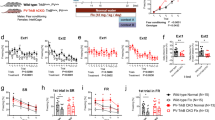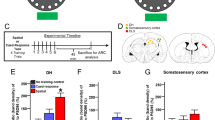Abstract
Both positive feedback learning and negative feedback learning are essential for adapting and optimizing behavioral performance. There is increasing evidence in humans and animals that the ability of negative feedback learning emerges postnatally. Our work in rats, using a two-way active avoidance task (TWA) as an experimental paradigm for negative feedback learning, revealed that medial and lateral prefrontal regions of infant rats undergo dramatic synaptic reorganization during avoidance training, resulting in improved avoidance learning in adulthood. The aim of this study was to identify changes of cellular activation patterns during the course of training and in relation to infant pretraining. We applied a quantitative cellular imaging technique using the immunocytochemical detection of the activity marker early growth response protein 1 (Egr1) as a candidate contributing to learning-induced synaptic plasticity. We found region-specific cellular activity patterns, which indicate that during the acquisition phase, Egr1 expression is specifically elevated in cellular ensembles of the orbitofrontal, dorsal anterior cingulate and hippocampal CA1 region. During memory retrieval Egr1 expression is elevated in cellular ensembles of the dentate gyrus. Moreover, we, for the first time, show here that TWA training during infancy alters adult learning- and memory-related patterns of Egr1 expression in these brain regions. It is tempting to speculate that during infant learning, specific Egr1-expressing cellular ensembles are “tagged” representing long-term memory formation, and that these cell ensembles may be reactivated during adult learning.





Similar content being viewed by others
References
Abraham WC, Dragunow M, Tate WP (1991) The role of immediate early genes in the stabilization of long-term potentiation. Mol Neurobiol 5(2–4):297–314
Abraham WC, Mason SE, Demmer J, Williams JM, Richardson CL, Tate WP, Lawlor PA, Dragunow M (1993) Correlations between immediate early gene induction and the persistence of long-term potentiation. Neuroscience 56:717–727
Bauer RH (1978) Ontogeny of two-way avoidance in male and female rats. Dev Psychobiol 11(2):103–116. doi:10.1002/dev.420110203
Bock J, Thode C, Hannemann O, Braun K, Darlison MG (2005) Early socio-emotional experience induces expression of the immediate-early gene Arc/arg3.1 (activity-regulated cytoskeleton-associated protein/activity-regulated gene) in learning-relevant brain regions of the newborn chick. Neuroscience 133(3):625–633
Bock J, Poeggel G, Gruss M, Wingenfeld K, Braun K (2013) Infant cognitive training preshapes learning-relevant prefrontal circuits for adult learning: learning-induced tagging of dendritic spines. Cereb Cortex 24(11):2920–2930. doi:10.1093/cercor/bht148
Bramham CR (2007) Control of synaptic consolidation in the dentate gyrus: mechanisms, functions, and therapeutic implications. Prog Brain Res 163:453–471. doi:10.1016/s0079-6123(07)63025-8
Bramham CR, Alme MN, Bittins M, Kuipers SD, Nair RR, Pai B, Panja D, Schubert M, Soule J, Tiron A, Wibrand K (2010) The arc of synaptic memory. Exp Brain Res 200(2):125–140. doi:10.1007/s00221-009-1959-2
Braun K, Antemano R, Helmeke C, Buchner M, Poeggel G (2009) Juvenile separation stress induces rapid region- and layer-specific changes in S100ss- and glial fibrillary acidic protein-immunoreactivity in astrocytes of the rodent medial prefrontal cortex. Neuroscience 160(3):629–638. doi:10.1016/j.neuroscience.2009.02.074
Cai DJ, Aharoni D, Shuman T, Shobe J, Biane J, Song W, Wei B, Veshkini M, La-Vu M, Lou J, Flores SE, Kim I, Sano Y, Zhou M, Baumgaertel K, Lavi A, Kamata M, Tuszynski M, Mayford M, Golshani P, Silva AJ (2016) A shared neural ensemble links distinct contextual memories encoded close in time. Nature 534(7605):115–118. doi:10.1038/nature17955
Chakraborty T, Asok A, Stanton ME, Rosen JB (2016) Variants of contextual fear conditioning induce differential patterns of Egr-1 activity within the young adult prefrontal cortex. Behav Brain Res 302:122–130. doi:10.1016/j.bbr.2016.01.018
Cheval H, Chagneau C, Levasseur G, Veyrac A, Faucon-Biguet N, Laroche S, Davis S (2012) Distinctive features of Egr transcription factor regulation and DNA binding activity in CA1 of the hippocampus in synaptic plasticity and consolidation and reconsolidation of fear memory. Hippocampus 22(3):631–642. doi:10.1002/hipo.20926
Cole AJ, Saffen DW, Baraban JM, Worley PF (1989) Rapid increase of an immediate early gene messenger RNA in hippocampal neurons by synaptic NMDA receptor activation. Nature 340(6233):474–476. doi:10.1038/340474a0
Davis S, Bozon B, Laroche S (2003) How necessary is the activation of the immediate early gene zif268 in synaptic plasticity and learning? Behav Brain Res 142(1–2):17–30
Duncan GE, Knapp DJ, Breese GR (1996) Neuroanatomical characterization of fos induction in rat behavioral models of anxiety. Brain Res 713(1–2):79–91
Gallitano-Mendel A, Izumi Y, Tokuda K, Zorumski CF, Howell MP, Muglia LJ, Wozniak DF, Milbrandt J (2007) The immediate early gene early growth response gene 3 mediates adaptation to stress and novelty. Neuroscience 148(3):633–643. doi:10.1016/j.neuroscience.2007.05.050
Gröger N, Bock J, Goehler D, Blume N, Lisson N, Poeggel G, Braun K (2016) Stress in utero alters neonatal stress-induced regulation of the synaptic plasticity proteins Arc and Egr1 in a sex-specific manner. Brain Struct Funct 221:679–685. doi:10.1007/s00429-014-0889-3
Gruss M, Abraham A, Schäble S, Becker S, Braun K (2010) Cognitive training during infancy and adolescence accelerates adult associative learning: critical impact of age, stimulus contingency and training intensity. Neurobiol Learn Mem 94(3):329–340. doi:10.1016/j.nlm.2010.07.005
Guzowski JF, Setlow B, Wagner EK, McGaugh JL (2001) Experience-dependent gene expression in the rat hippocampus after spatial learning: a comparison of the immediate-early genes Arc, c-fos, and zif268. J Neurosci 21(14):5089–5098
Hayes DJ, Duncan NW, Xu J, Northoff G (2014) A comparison of neural responses to appetitive and aversive stimuli in humans and other mammals. Neurosci Biobehav Rev 45:350–368. doi:10.1016/j.neubiorev.2014.06.018
Izquierdo I, Salzano F, Thome FS, Thaddeu R (1975) Shuttle behavior in weanling and in adult rats. Behav Biol 14(3):361–366
Izquierdo I, Furini CR, Myskiw JC (2016) Fear memory. Physiol Rev 96(2):695–750. doi:10.1152/physrev.00018.2015
Kastellakis G, Silva AJ, Poirazi P (2016) Linking memories across time via neuronal and dendritic overlaps in model neurons with active dendrites. Cell Rep 17(6):1491–1504. doi:10.1016/j.celrep.2016.10.015
Klavir O, Genud-Gabai R, Paz R (2013) Functional connectivity between amygdala and cingulate cortex for adaptive aversive learning. Neuron 80(5):1290–1300. doi:10.1016/j.neuron.2013.09.035
Kudryashova IV (2006) Postnatal development of conditioned reflex behavior: comparison of the times of maturation of plastic processes in the rat hippocampus. Neurosci Behav Physiol 36(1):73–78. doi:10.1007/s11055-005-0164-4
Mendez-Couz M, Conejo NM, Gonzalez-Pardo H, Arias JL (2015) Functional interactions between dentate gyrus, striatum and anterior thalamic nuclei on spatial memory retrieval. Brain Res 1605:59–69. doi:10.1016/j.brainres.2015.02.005
Milbrandt J (1987) A nerve growth factor-induced gene encodes a possible transcriptional regulatory factor. Science 238(4828):797–799
Myslivecek J, Hassmannova J (1979) Ontogeny of active avoidance in the rat: learning and memory. Dev Psychobiol 12(2):169–186. doi:10.1002/dev.420120209
O’Malley A, O’Connell C, Regan CM (1998) Ultrastructural analysis reveals avoidance conditioning to induce a transient increase in hippocampal dentate spine density in the 6 hour post-training period of consolidation. Neuroscience 87(3):607–613
O’Malley A, O’Connell C, Murphy KJ, Regan CM (2000) Transient spine density increases in the mid-molecular layer of hippocampal dentate gyrus accompany consolidation of a spatial learning task in the rodent. Neuroscience 99(2):229–232
Penke Z, Morice E, Veyrac A, Gros A, Chagneau C, LeBlanc P, Samson N, Baumgartel K, Mansuy IM, Davis S, Laroche S (2014) Zif268/Egr1 gain of function facilitates hippocampal synaptic plasticity and long-term spatial recognition memory. Philos Trans R Soc Lond B Biol Sci 369(1633):20130159. doi:10.1098/rstb.2013.0159
Penner MR, Parrish RR, Hoang LT, Roth TL, Lubin FD, Barnes CA (2016) Age-related changes in Egr1 transcription and DNA methylation within the hippocampus. Hippocampus 26(8):1008–1020. doi:10.1002/hipo.22583
Peters S, Braams BR, Raijmakers ME, Koolschijn PC, Crone EA (2014) The neural coding of feedback learning across child and adolescent development. J Cogn Neurosci 26(8):1705–1720. doi:10.1162/jocn_a_00594
Plath N, Ohana O, Dammermann B, Errington ML, Schmitz D, Gross C, Mao X, Engelsberg A, Mahlke C, Welzl H, Kobalz U, Stawrakakis A, Fernandez E, Waltereit R, Bick-Sander A, Therstappen E, Cooke SF, Blanquet V, Wurst W, Salmen B, Bosl MR, Lipp HP, Grant SG, Bliss TV, Wolfer DP, Kuhl D (2006) Arc/Arg3.1 is essential for the consolidation of synaptic plasticity and memories. Neuron 52(3):437–444. doi:10.1016/j.neuron.2006.08.024
Radley JJ, Rocher AB, Miller M, Janssen WG, Liston C, Hof PR, McEwen BS, Morrison JH (2006) Repeated stress induces dendritic spine loss in the rat medial prefrontal cortex. Cereb Cortex 16(3):313–320
Roberts LA, Higgins MJ, O’Shaughnessy CT, Stone TW, Morris BJ (1996) Changes in hippocampal gene expression associated with the induction of long-term potentiation. Brain Res Mol Brain Res 42(1):123–127
Ros J, Pellerin L, Magara F, Dauguet J, Schenk F, Magistretti PJ (2006) Metabolic activation pattern of distinct hippocampal subregions during spatial learning and memory retrieval. J Cereb Blood Flow Metab 26(4):468–477. doi:10.1038/sj.jcbfm.9600208
Schäble S, Poeggel G, Braun K, Gruss M (2007) Long-term consequences of early experience on adult avoidance learning in female rats: role of the dopaminergic system. Neurobiol Learn Mem 87(1):109–122. doi:10.1016/j.nlm.2006.07.005
Schlund MW, Siegle GJ, Ladouceur CD, Silk JS, Cataldo MF, Forbes EE, Dahl RE, Ryan ND (2010) Nothing to fear? Neural systems supporting avoidance behavior in healthy youths. Neuroimage 52(2):710–719. doi:10.1016/j.neuroimage.2010.04.244
Schreiber WB, Asok A, Jablonski SA, Rosen JB, Stanton ME (2014) Egr-1 mRNA expression patterns in the prefrontal cortex, hippocampus, and amygdala during variants of contextual fear conditioning in adolescent rats. Brain Res 1576:63–72. doi:10.1016/j.brainres.2014.06.007
Scully D, Fedriani R, Desouza IE, Murphy KJ, Regan CM (2012) Regional dissociation of paradigm-specific synapse remodeling during memory consolidation in the adult rat dentate gyrus. Neuroscience 209:74–83. doi:10.1016/j.neuroscience.2012.01.020
Sprowitz A, Bock J, Braun K (2013) Sex-specific positive and negative consequences of avoidance training during childhood on adult active avoidance learning in mice. Front Behav Neurosci 7:143. doi:10.3389/fnbeh.2013.00143
Thode C, Bock J, Braun K, Darlison MG (2005) The chicken immediate-early gene ZENK is expressed in the medio-rostral neostriatum/hyperstriatum ventrale, a brain region involved in acoustic imprinting, and is up-regulated after exposure to an auditory stimulus. Neuroscience 130(3):611–617. doi:10.1016/j.neuroscience.2004.10.015
Tzschoppe J, Nees F, Banaschewski T, Barker GJ, Buchel C, Conrod PJ, Garavan H, Heinz A, Loth E, Mann K, Martinot JL, Smolka MN, Gallinat J, Strohle A, Struve M, Rietschel M, Schumann G, Flor H (2014) Aversive learning in adolescents: modulation by amygdala-prefrontal and amygdala-hippocampal connectivity and neuroticism. Neuropsychopharmacology 39(4):875–884. doi:10.1038/npp.2013.287
van Duijvenvoorde AC, Zanolie K, Rombouts SA, Raijmakers ME, Crone EA (2008) Evaluating the negative or valuing the positive? Neural mechanisms supporting feedback-based learning across development. J Neurosci 28(38):9495–9503. doi:10.1523/jneurosci.1485-08.2008
Veyrac A, Besnard A, Caboche J, Davis S, Laroche S (2014) The transcription factor Zif268/Egr1, brain plasticity, and memory. In: Khan SU, Muly EC (eds) Progress in molecular biology and translational science, vol 122. Academic Press, Burlington, pp 89–129
Wisden W, Errington ML, Williams S, Dunnett SB, Waters C, Hitchcock D, Evan G, Bliss TV, Hunt SP (1990) Differential expression of immediate early genes in the hippocampus and spinal cord. Neuron 4(4):603–614
Xie L, Korkmaz KS, Braun K, Bock J (2013) Early life stress-induced histone acetylations correlate with activation of the synaptic plasticity genes Arc and Egr1 in the mouse hippocampus. J Neurochem 125(3):457–464. doi:10.1111/jnc.12210
Acknowledgements
We thank Madeleine Stiefel for helping with editorial work. This work was funded by the Bundesministerium für Bildung und Forschung, Grant no: 01KR1304B (TRANSGEN) and Grant No: 01KR1207D (UBICA).
Author information
Authors and Affiliations
Corresponding author
Rights and permissions
About this article
Cite this article
Gröger, N., Mannewitz, A., Bock, J. et al. Infant avoidance training alters cellular activation patterns in prefronto-limbic circuits during adult avoidance learning: I. Cellular imaging of neurons expressing the synaptic plasticity early growth response protein 1 (Egr1). Brain Struct Funct 222, 3639–3651 (2017). https://doi.org/10.1007/s00429-017-1423-1
Received:
Accepted:
Published:
Issue Date:
DOI: https://doi.org/10.1007/s00429-017-1423-1




